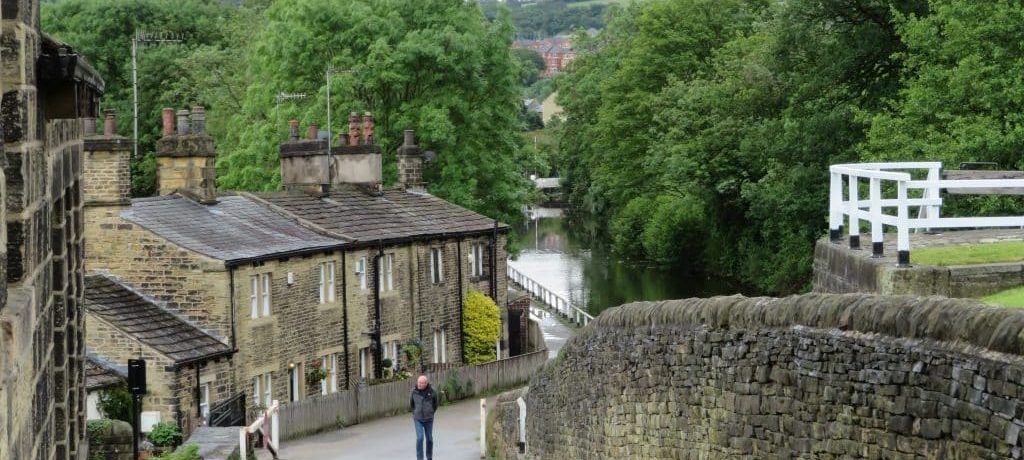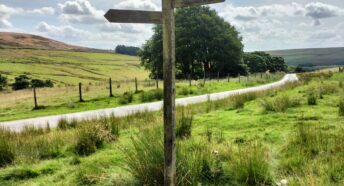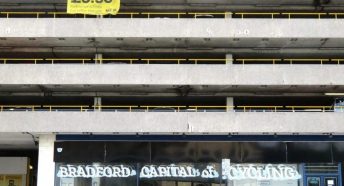Esholt: Walkability and a low-car future
The need for walkability is beyond doubt, and CPRE’s vision is for West Yorkshire to be much more walkable in the future than it is at present. Walking is the surest route to physical and mental wellbeing. And although it may seem unlikely right now, a future with far fewer cars in it is both necessary and inevitable.
Cities are increasingly realising how inefficient the private car is: it occupies vast amounts of space and creates many physical barriers, not to mention the carbon and air pollution impacts that will only be gradually abated by technological advance, and are costing many lives.
The Esholt development therefore faces a conundrum. It will be born into a car-dependent age, but it must be adaptable to a low-car future. The trick is therefore to enable people to access their homes and workplaces by car if they wish, but to create an environment in which walking is a realistic and attractive everyday choice for many trips – something which suburban housing schemes have badly failed to do for decades.
When communities are contemplating the impacts of new development, one of their biggest concerns is usually additional road traffic. This site is no exception. The proposal is to have a permit-only through access from Esholt village, and because the employment development is at the southern end of the site, nearest to the access road, then traffic through the site will hopefully be reasonably limited. However, it is difficult to have confidence that the proximity of Apperley Bridge station will have a major effect in reducing car traffic, especially as it is a brisk half-hour walk to the residential part of the scheme.
But walkability is not the same thing as restricting car traffic or parking provision. It’s about the carrot, not the stick – making walking a positive, everyday choice. Jeff Speck, an American planner and urban designer, is an expert on walkability. He argues that for people to choose walking as a matter of course for their journeys, their walk needs to be useful, comfortable and interesting.
Breaking this down:
- ‘Useful’ means having things to walk from and to, so a good variety of uses must be within walking distance of each other;
- ‘Comfortable’ means that the walk feels pleasant and safe, regardless of your gender or age, or of the weather (up to a point!);
- ‘Interesting’ means that there are features to capture the attention along the way, avoiding boredom and giving good reason to make the same walk many times.
At Esholt, there is very good scope for walking to be both a comfortable and an interesting choice. The design of the new-build parts of the site, the interconnecting park, and the connections to the woodland, Esholt Hall and its gardens, and to Esholt village, can all contribute to this. Additional tree-planting along walking routes will help to maintain year-round comfort in most weather.
It is the usefulness of the walk that is uncertain – there must be something worth walking to. That means having shops and community facilities within the site that are useful to residents and to employees in the industrial area, and also to visitors. A good supply of visitors is important to avoid the sense of a private enclave – and also to the success of the development in demonstrating to the wider world that ‘Positive Living’ works. The fact that such facilities also bring with them additional vehicle traffic may be a price worth paying, but it may also cause objections. The fact that the residential and industrial areas are so separate in the current proposals has a functional logic, but is it necessary? Are the businesses likely to be nuisance neighbours, or is a more mixed-use outcome achievable that is more likely to foster useful walks?
The proposed treatment of the main access road is a potential obstacle to walkability. The intention is to branch off from the Apperley Bridge station approach, bridge over the railway to the west of the station, and then join up to the Avenue, which is the historic carriage drive of the Hall. Given that the Park & Ride facility at the station is already quite dominant in the landscape, there is a risk that the first impression of approaching the site – whether by car or on foot – will be of a large car park. It would be good to see this risk resolved through careful design, and a re-design of the existing car park is probably a necessary part of that.
CPRE wants to be pragmatic and positive about the Esholt scheme. There is great potential for something innovative and interesting. But for the development to be fit for the future, in our view it must be fit for a healthy, low-car future. It must be designed, from the beginning, with walkability in mind – bringing enough of a range of amenities within reach of a pleasant, useful walk. Then when, as it surely must, the private car becomes the servant, and no longer the master, of land-use planning, the scheme will be perfectly-placed to adapt.









